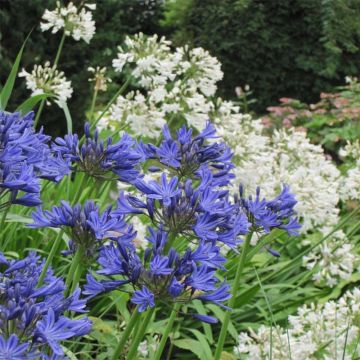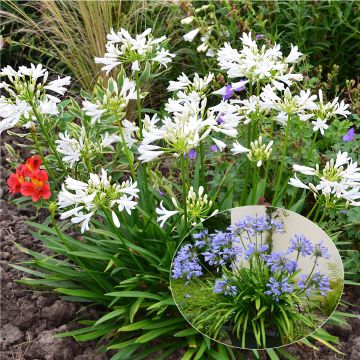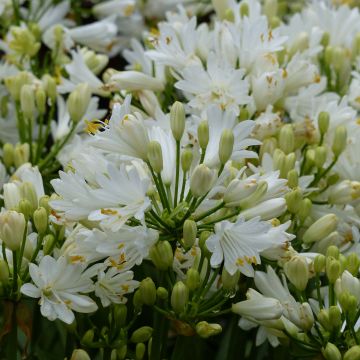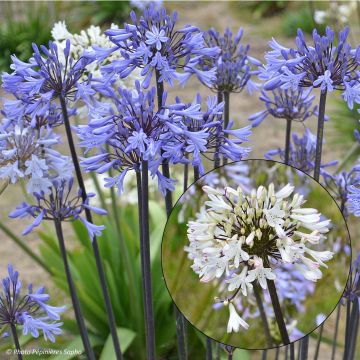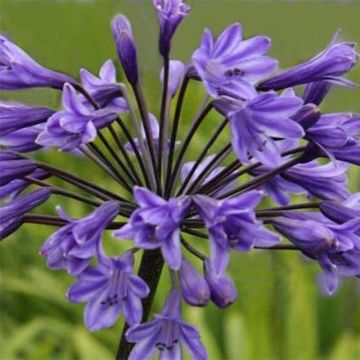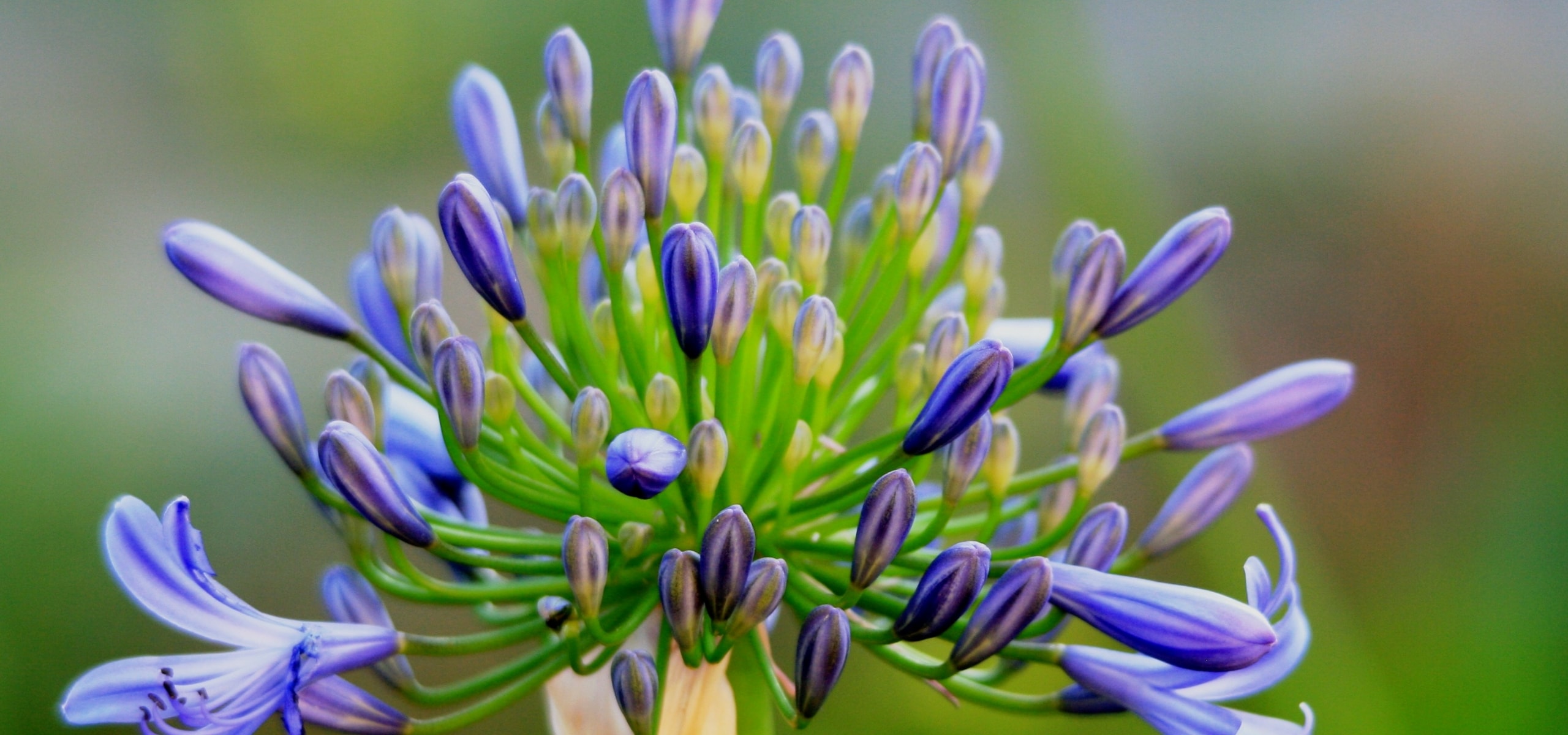
Agapanthus: how to plant them
Our tips for successful cultivation
Contents
Agapanthus, with their magnificent blue or white umbel flowers, bring a touch of elegance and exoticism to any garden or terrace. Robust perennial plants that are easy to maintain, agapanthus are valued for their ability to bloom abundantly in summer, forming stunning clumps or enhancing balconies and terraces. However, to make the most of these plants and see them thrive, it is essential to understand their specific needs regarding soil, exposure, and winter protection. Discover all our tips for successfully planting and cultivating agapanthus!
Where to plant agapanthus?
Agapanthus can be grown in the ground, in a flowerbed, or in pots, for example on a balcony or terrace.
If you grow them in the ground, plant them in rich soil, slightly moist but especially well-drained. They are sensitive to stagnant moisture, which can cause root rot. If your soil is heavy and clayey, it is advisable to add sand or gravel to improve drainage. In regions with a mild climate, they can be planted in the ground, where they will thrive fully, benefiting from the space needed to develop their root system.
If you live in an area with cold winters or if you are growing non-hardy varieties, pot planting is recommended. This will allow you to bring them indoors to protect them from winter frosts. Use a large pot, as the roots of agapanthus like to have space to grow. Ensure that the pot has a good drainage system by placing a layer of clay balls or gravel at the bottom of the container, then fill it with a mix of potting soil and sand to ensure good aeration for the roots.
The hardiness of agapanthus varies by variety. Some can withstand winter temperatures as low as -10°C or even -15°C.
To learn how to identify the hardiest agapanthus, check out Michael’s tips in the article: “Hardy Agapanthus for the North?”
For abundant and vigorous flowering, agapanthus need a sunny and warm location, with a minimum of 6 hours of direct sunlight per day. Avoid planting them in areas where water can stagnate, such as in hollows or low areas of the garden. Whenever possible, prefer planting at a height, on a slope or mound, to limit the risks of excessive moisture in winter.
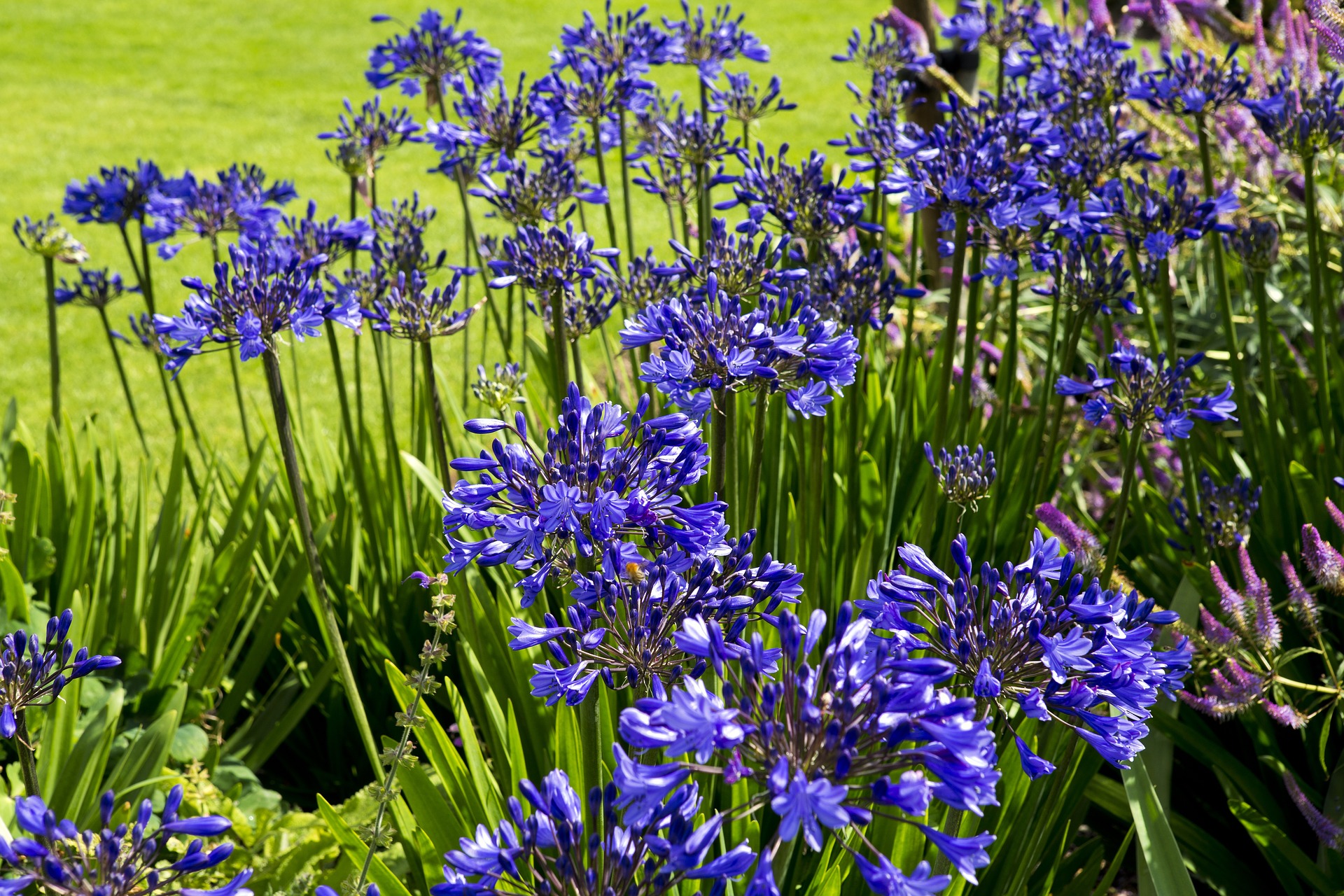
Read also
Agapanthus: planting, growing and careWhen to plant agapanthus?
It is best to plant agapanthus in spring, in March or April, when the frosts have passed and the soil is warming up. This allows the roots to establish well before summer.
Planting in autumn can be considered in regions with mild winters, but it is riskier, as moisture and cold can damage the young plants. If you plant in autumn, be sure to protect your agapanthus with mulch and ensure that the soil is well-drained.
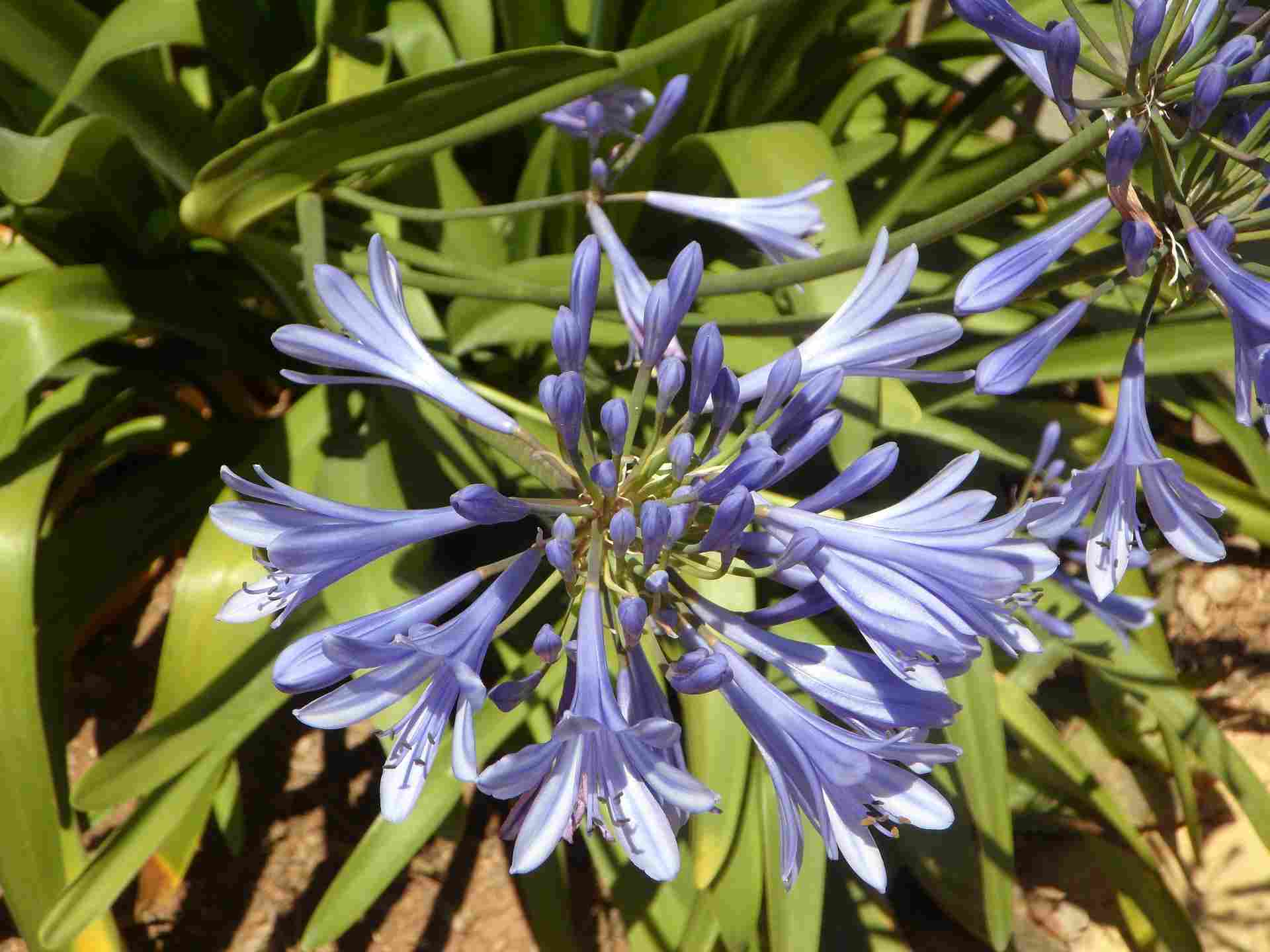
Discover other Agapanthus - Lily of the Nile
View all →Available in 0 sizes
Available in 0 sizes
Available in 2 sizes
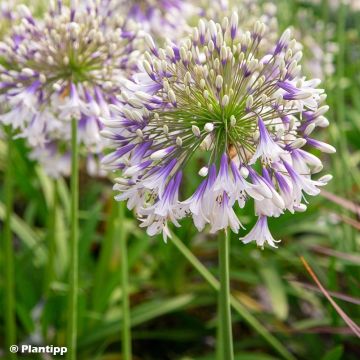
Available in 3 sizes
Available in 0 sizes
Available in 0 sizes
Available in 5 sizes
Available in 2 sizes
Available in 2 sizes
Available in 2 sizes
How to plant them?
In open ground:
- Dig a planting hole at least 3 to 4 times wider and deeper than the root ball of the plant. This will allow the roots to spread easily and establish well.
- If your soil is heavy or clayey, replace the excavated soil with a mixture of equal parts potting soil and sand to improve drainage. In well-drained soil, a simple addition of potting soil will suffice.
- Replace this mixture in the hole, ensuring that the roots are covered by at least 10 cm of good soil. The crown of the plant should be slightly below the soil surface, but not too buried.
- After planting, water generously to compact the soil around the roots. Then, water regularly during the growth period, about twice a week, especially in dry weather. However, be careful not to let the water stagnate, as agapanthus dislike excess moisture.
In a pot:
- Use a large pot of at least 30 cm in depth and width, as the roots of agapanthus like to have space.
- Place a layer of clay balls, gravel, or pottery shards at the bottom of the pot to ensure good drainage and prevent water stagnation.
- Fill the pot with a mixture composed of 50% potting soil and 50% garden sand to ensure good aeration of the roots.
- Plant your agapanthus, then fill in by adding a bit of substrate.
- Water generously to compact the substrate around the roots.
Read also
Agapanthus: the 7 hardiest varietiesHow to care for them?
Watering agapanthus should be regular, especially during the growth period. In open ground, it is advisable to water about twice a week, ensuring that the soil remains moist without excess water, as agapanthus dislike stagnant moisture. In pots, watering should be more frequent, particularly in summer, as soon as the substrate begins to dry out. It is important that the water drains well and to always empty the saucer to prevent the roots from sitting in water.
In spring, a potassium-rich fertiliser promotes generous flowering. During flowering, adding a liquid fertiliser every 15 days can support the plant in its efforts. After flowering, we recommend cutting the faded flower stems down to the ground to prevent the plant from wasting energy producing seeds. In winter, if the leaves turn yellow, they can be cut for a neater appearance, but leaving the foliage can also be beneficial, as it protects the plant from the cold.
In regions with cold winters, a thick mulch around the base of agapanthus in open ground is recommended to protect the roots from frost. Materials such as fallen leaves or straw work well. From autumn, limit watering as agapanthus dislike excess moisture in winter. For potted plants, it is best to bring them indoors to a frost-free place, such as a greenhouse or an unheated garage. If this is not possible, wrapping the pot with horticultural fleece or hessian can help protect the roots.
Dividing clumps of agapanthus every 3 to 4 years helps to revitalise them and prevent them from becoming overcrowded. This operation stimulates flowering and also provides an opportunity to multiply the young plants. It is best to carry out this division in spring or autumn.
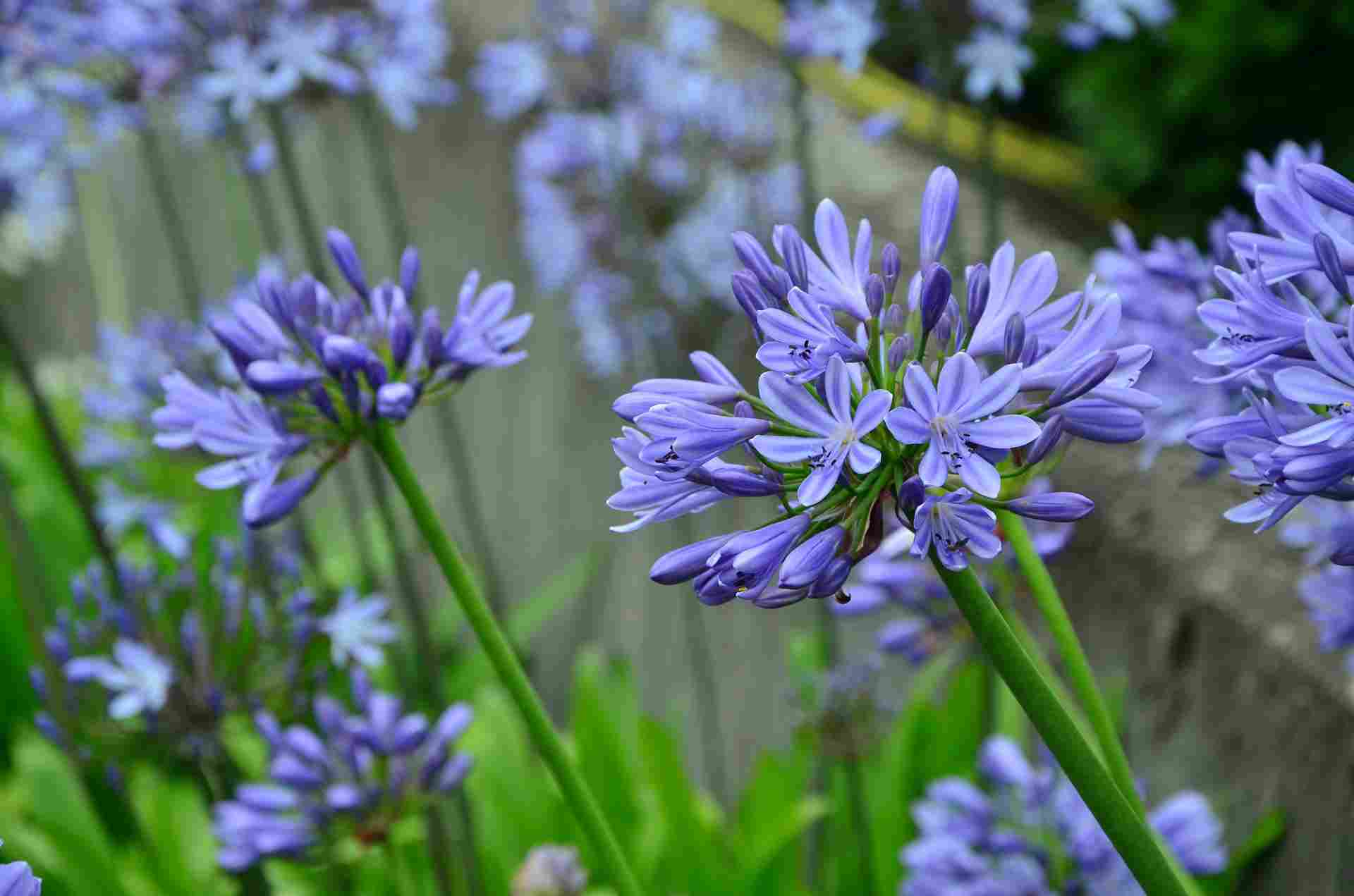
- Subscribe!
- Contents































